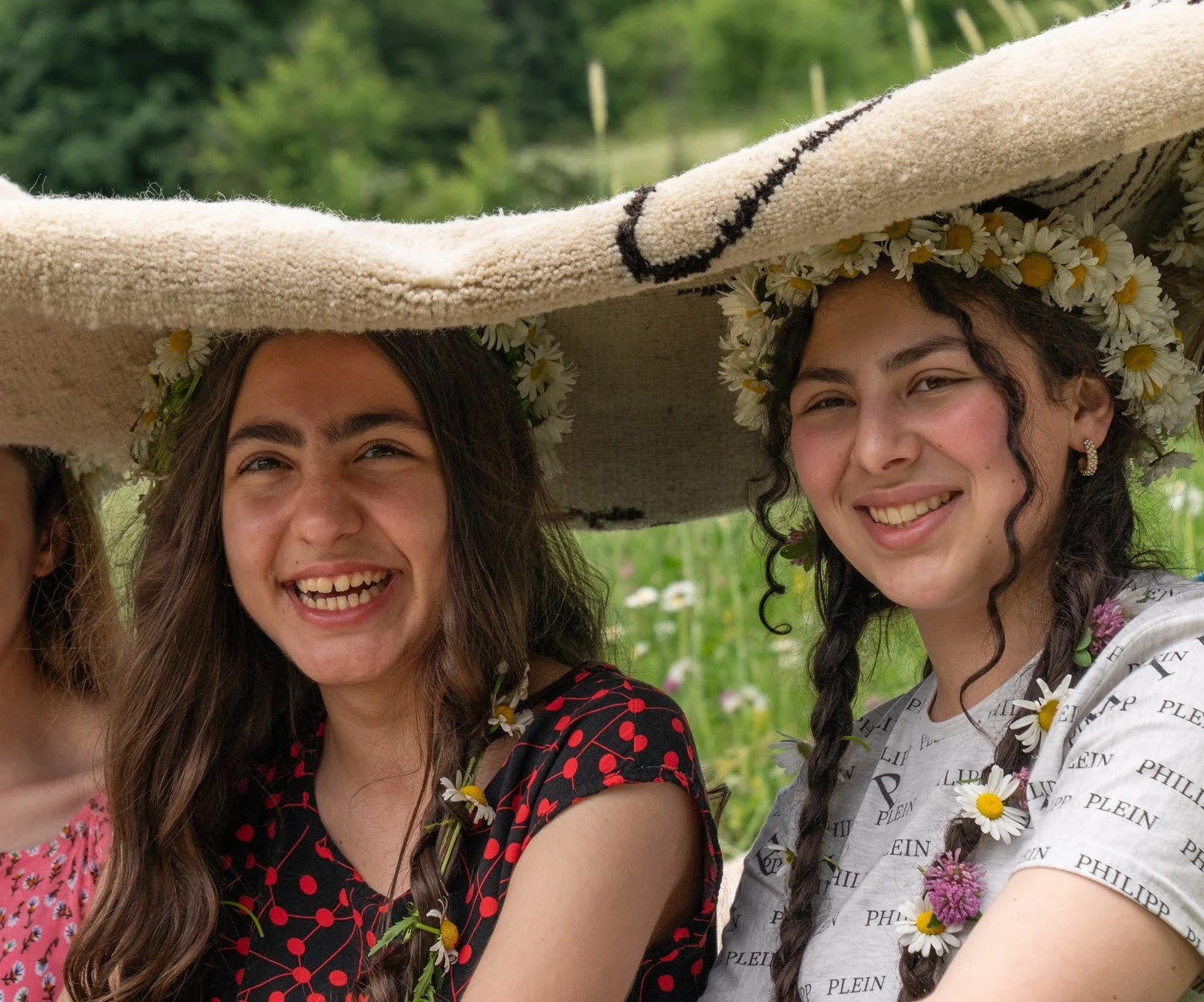FREE worldwide shipping from Armenia
and FREE custom designs for flat weaves
Noyemberyan
House of Culture
Representing three generations of rug makers from the communities of Noyemberyan, Jujevan, and Voskepar, the coders from the Noyemberyan House of Culture are keeping traditional weaving practices alive despite the threat of war right at their doorstep.
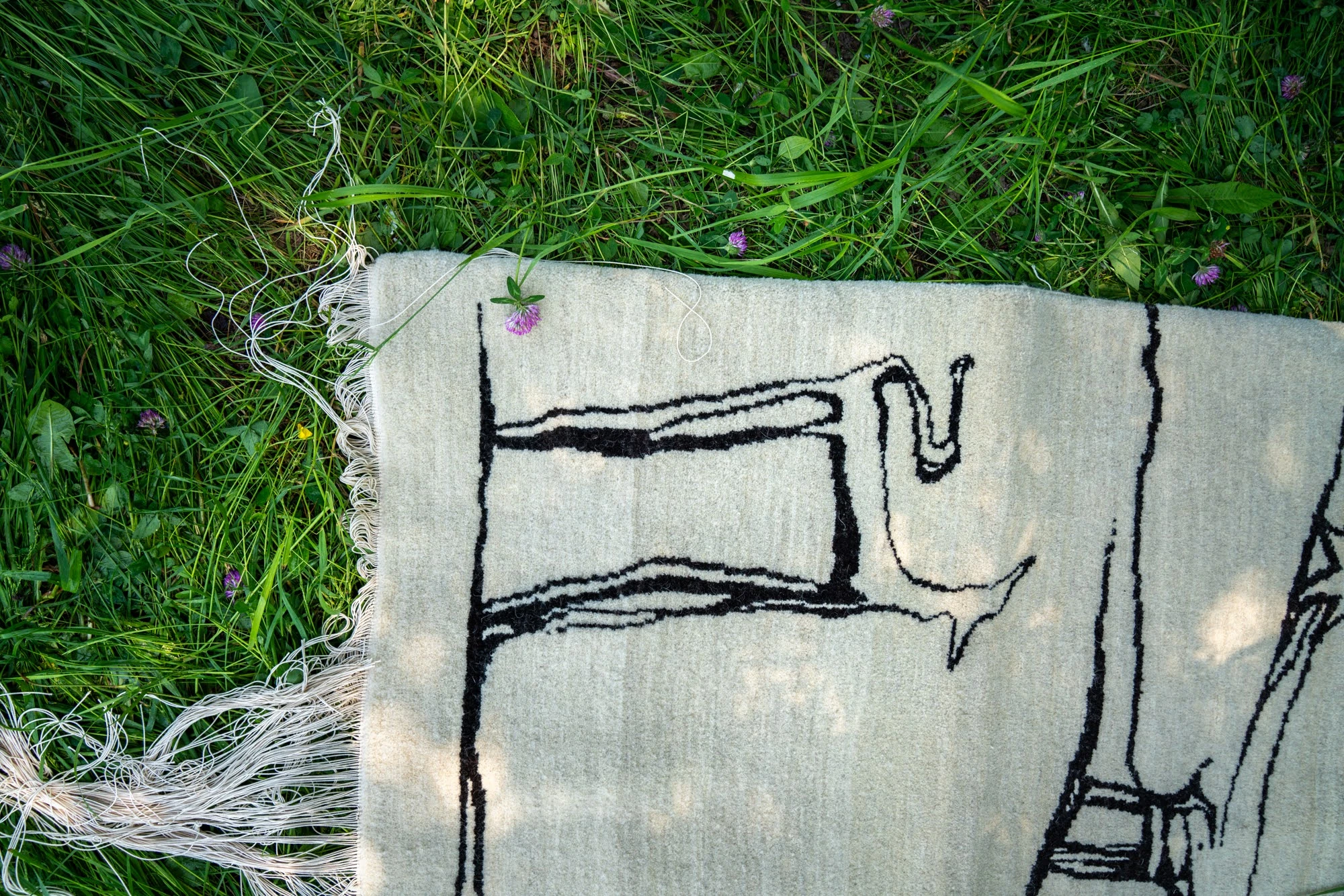
Mane Harutyunyan
Jujevan village, Tavush Province
"I was born and raised in Jujevan village, Tavush Province. I began learning how to weave in 2019 when I was in the 7th grade. At the time there was a rug making club in Jujevan where one of the village elders was teaching young people how to weave rugs. That club closed due to financial constraints, but I wanted to continue learning how to weave, so I began attending classes at the Noyemberyan House of Culture, where Mrs. Rima was leading the local rug making club. I later was accepted into the Noyemberyan Fine Arts School, where I chose rug making as my primary area of study. I graduated in 2024 and am now attending the State Pedagogical University in Yerevan, majoring in Russian language and literature."
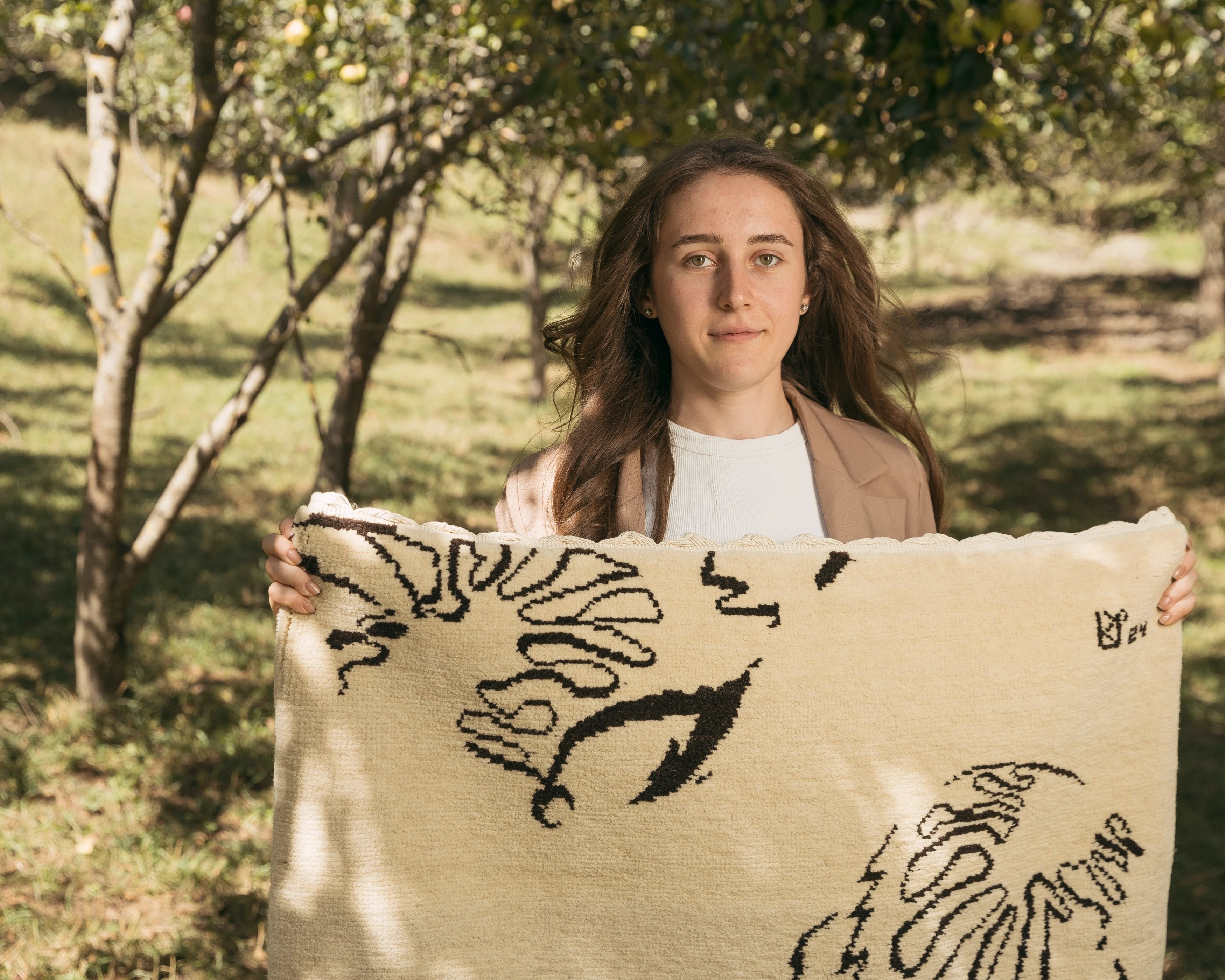
"I wove my rug from the collection in my bedroom in our village home, which is in need of renovation. I hope to weave full time in the future, and use my income to renovate our home so that my family can live comfortably, and so that I can work comfortably at home. I dream of having my own studio at home where no one would enter and interrupt my work. It would be just me and my rugs. Rugs are very sensitive. I personally believe that a rug should only be seen once it is complete, and not before. I don’t even want people to walk past a rug that I’m working on. Even if someone simply passes by and says 'That rug is so beautiful,' the rug changes. It doesn’t turn out the way it was originally intended. The threads feel us and our attitudes toward them – bad and good."
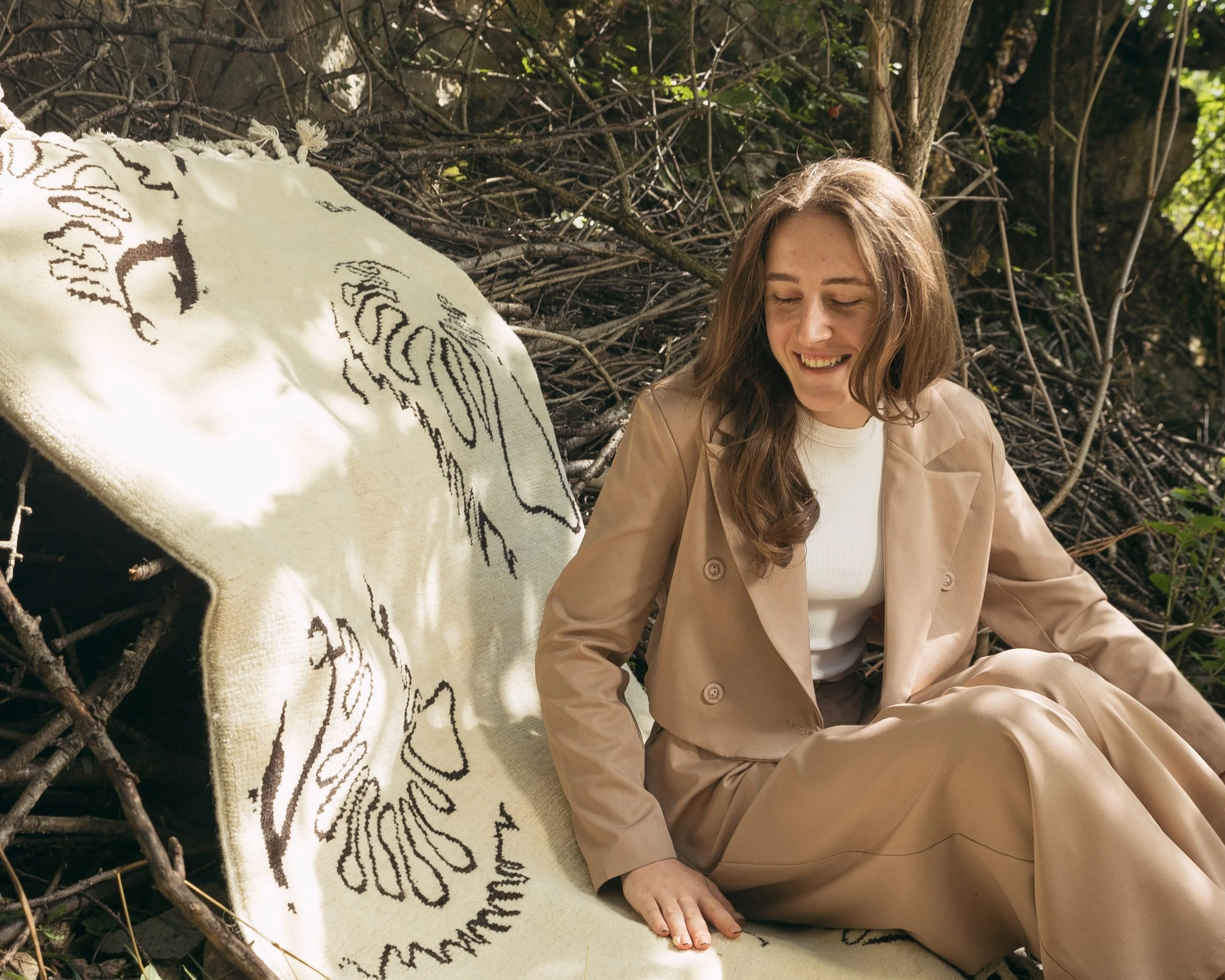
"I can’t walk past rugs with indifference. The smallest details of a rug always catch my attention. I always study the rugs that I encounter so that in the future when I make a new rug I can refer back to what I’ve seen for inspiration. The more you keep a rug in your space, the more its beauty grows. Over time as you admire it, you discover new details in its composition that you had not previously noticed – everytime it catches your gaze, it draws you in even more. I hope that our clients experience that when they receive one of our rugs."
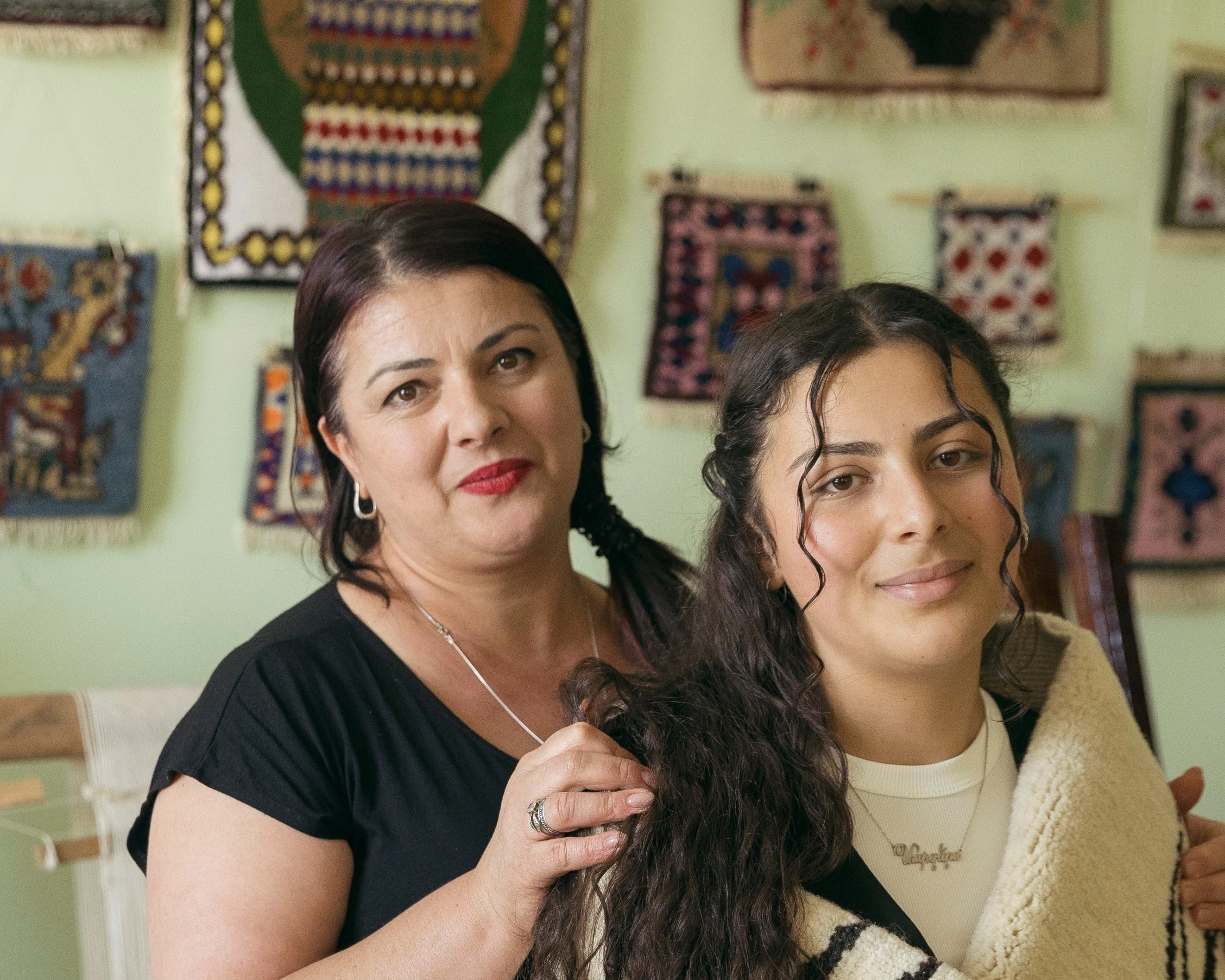
Rima Ananyan
Noyemberyan, Tavush Province
"I was born in Noyemberyan and have been weaving rugs since I was a child. We had a large loom in our home that my mother would use to weave rugs. At first I would disrupt her work as a child, but once I began learning and weaving with her I started to love rugs. I studied applied arts at Yerevan State University’s Ijevan branch with a focus on rug making. As a child I would simply make knots with my mother, I didn’t really understand what a rug was. But as a student I started designing and making my own rugs. After graduating I began working at the Noyemberyan Fine Art School as a teacher of fine art. Today I work as the rug making group leader at the school, and support the rest of the collective at the House of Culture."
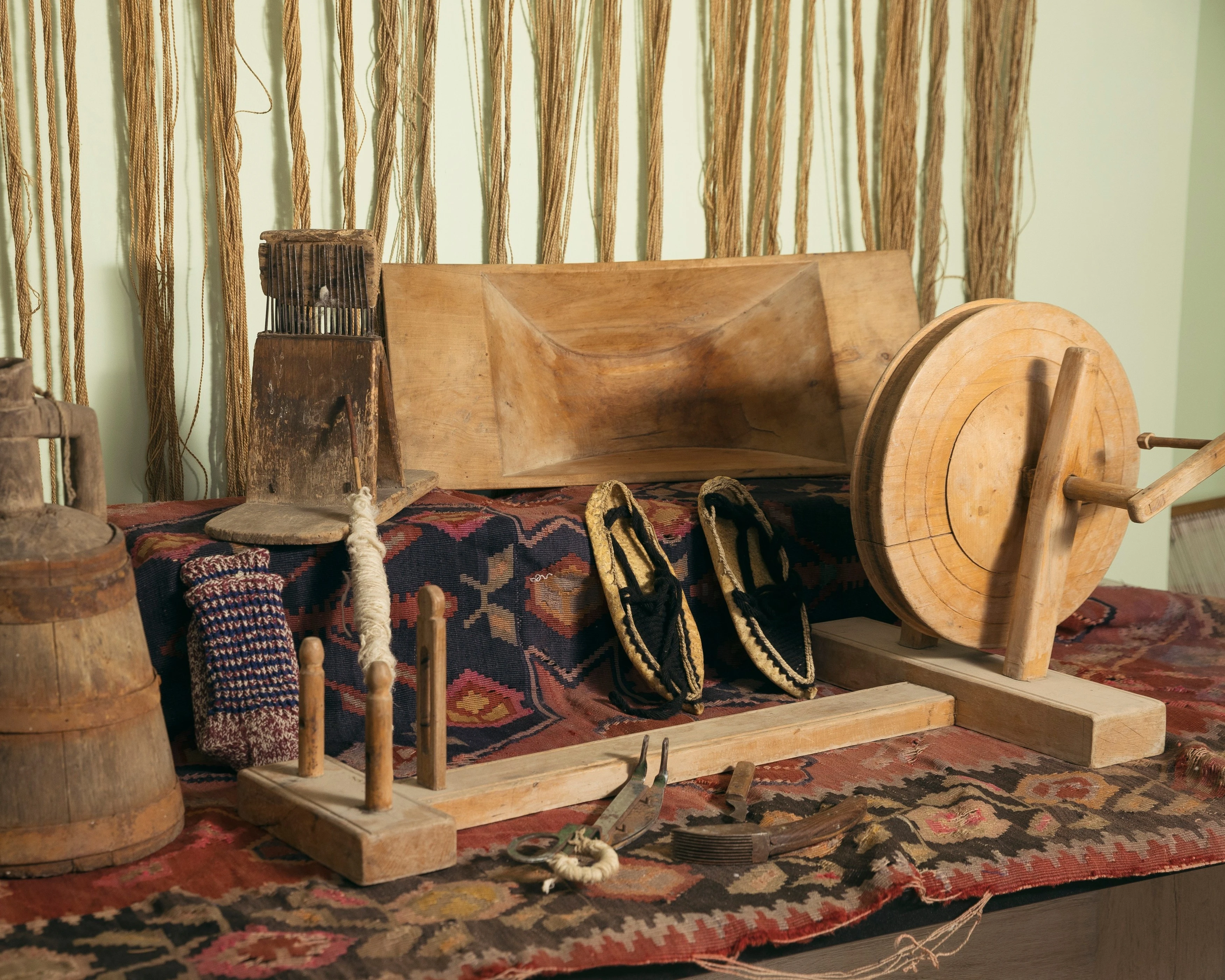
"During the ‘cold and dark’ years there was nothing to do. There was no work, no activities, nowhere to go, there wasn’t even electricity – I remember it very clearly. Women from our neighborhood would gather at our house, repurpose threads from clothing, and sit in front of my mother’s loom with her to weave, chat, and pass the time. But before the collapse, there used to be looms in every other home. Women would make rugs at home and bring them out to show them off. They would evaluate each other’s work – 'Her rug is beautiful,' or 'Her rug is big,' they would say. Their children would help them make those rugs. They would lay the rugs on beds, on couches, on the floor, or they would hang them on walls. I have two daughters today who know how to weave. Initially I didn’t teach them – they began learning simply by watching me work."
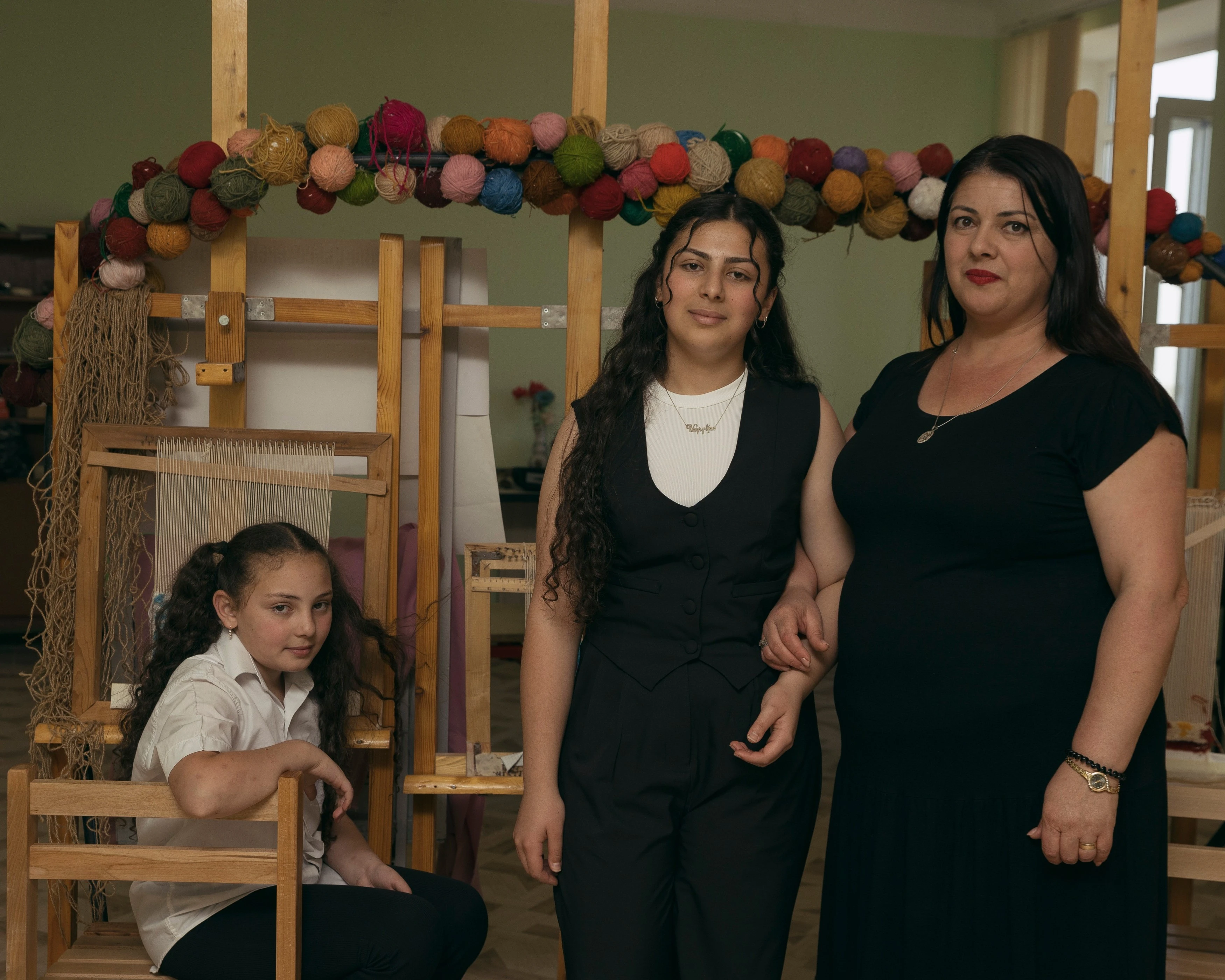
Marzela: "Rugs don’t have the same value they once did for local people. After hearing Mom’s stories related to rugs, I’ve understood that traditional rugs are not so popular. In the future I would love to create rugs that will reawaken local people’s interest in handmade rugs."
Rima: "I’m always looking for unemployed women to convince them to come and learn weaving for free, so that they can stay busy and potentially earn an income. I tell them, 'Get out of the house, change your environment, learn something new.' And they're coming."
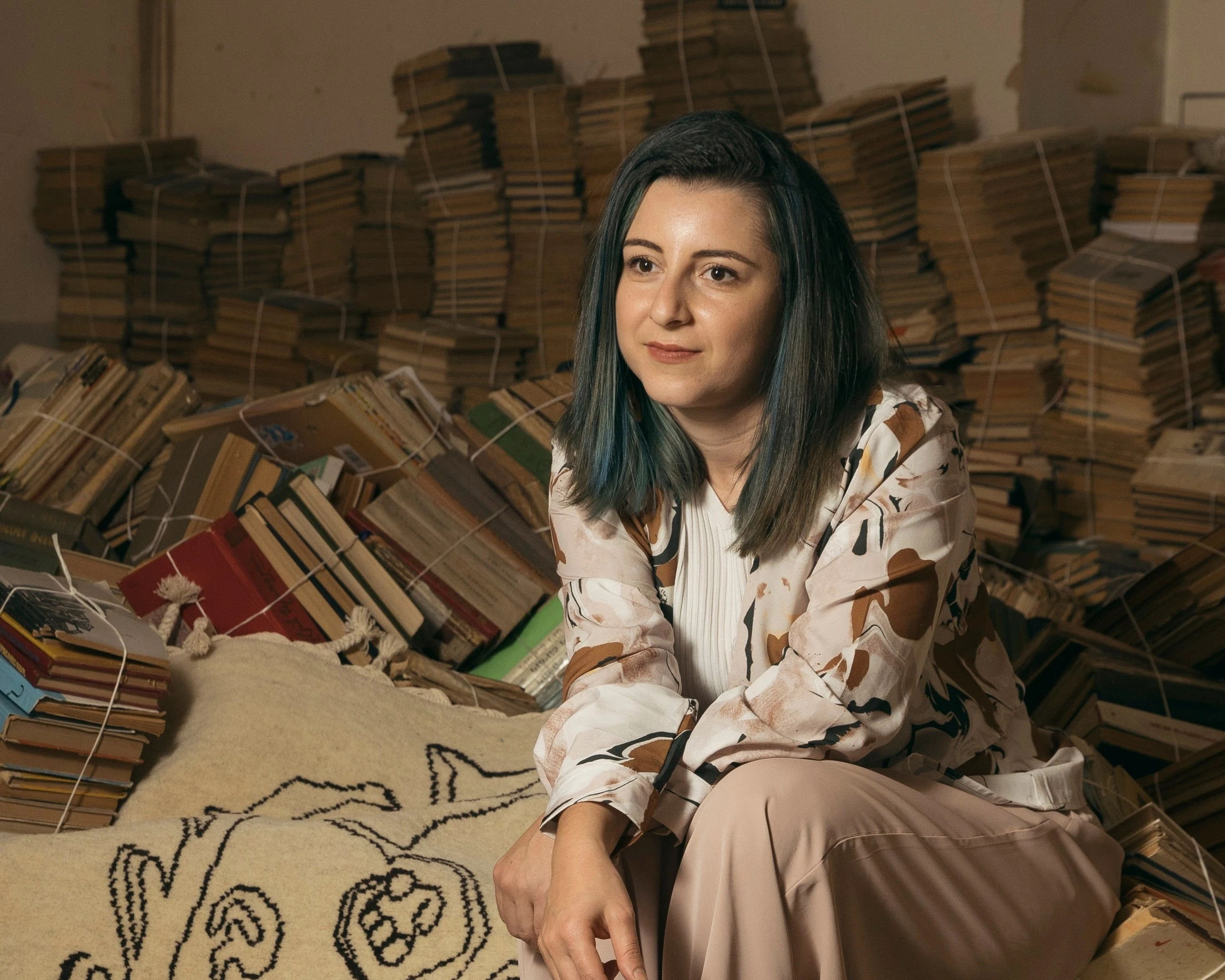
Diana Mamyan
Noyemberyan, Tavush Province
"I was born and raised in Noyemberyan, where I work at the local House of Culture as a felt artist and rug maker. For me, felt and weaves are like siblings. At first I was interested in felt art. It was only later that I understood that I love rugs too. When I was a child there were rug making classes here at the House of Culture where I first learned how to weave. After I completed my university studies and started a family, I returned to the House of Culture and saw the rugs that Mrs. Rima and her students were making, and I was really impressed. I decided that I wanted to practice weaving again as a hobby. But Mrs. Rima saw potential in me and hired me to be the rug making club’s leader and teacher."
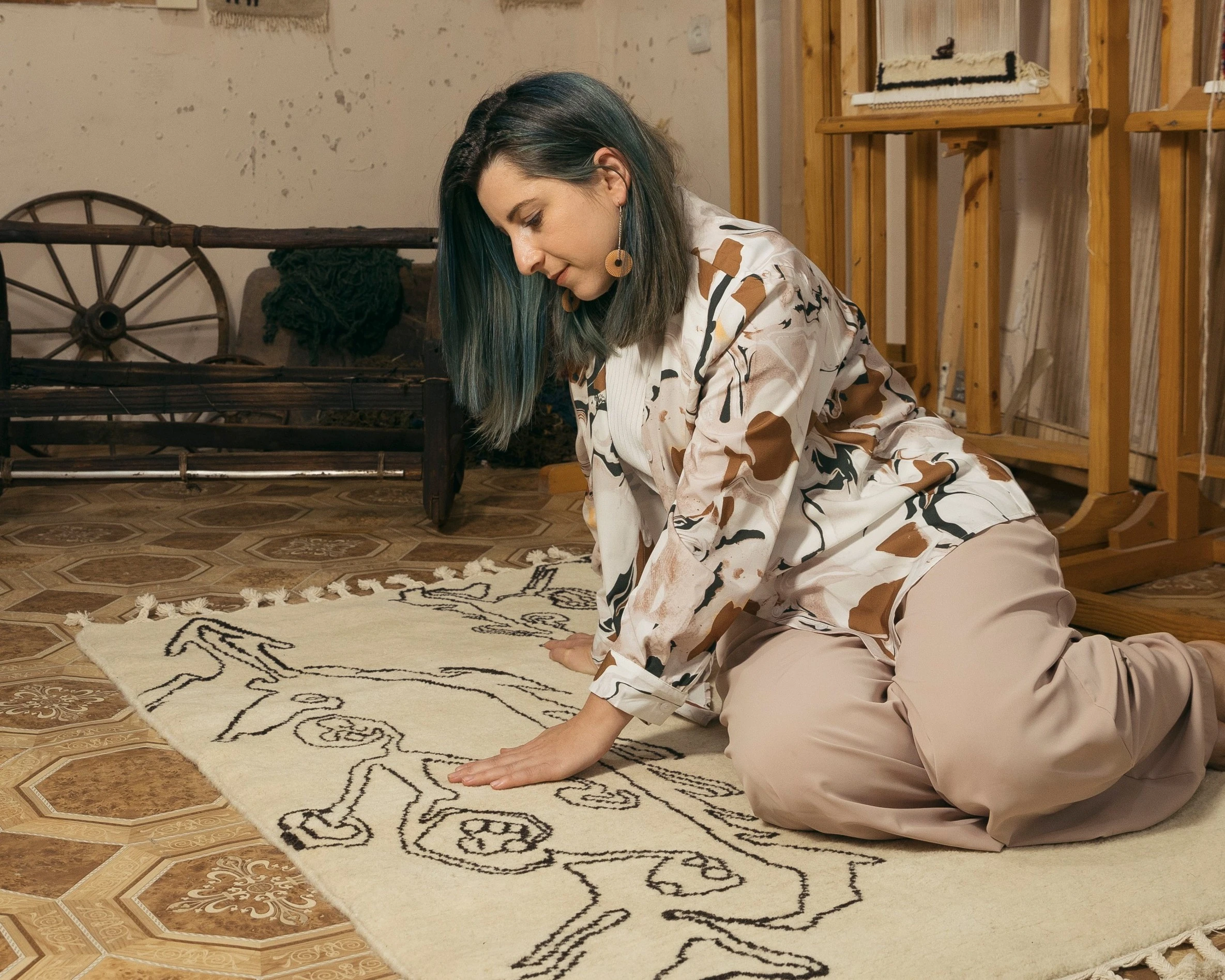
"As a child I practiced lots of crafts like pottery and embroidery. I’ve pretty much done it all. But rugs hold a special place in my heart. It probably came to me from my grandmother, who was a weaver. When I told her that I was going to be working on a new piece for the Barana Collection, she became very happy and said that she would help me make it. She was sick at the time, but said that as soon as she recovered she would help me weave this piece. Unfortunately she passed away before she could do that. It makes me sad knowing how much she wanted to make this rug with me but was unable to. I associate rugs with my grandmother. I have memories of her weaving rugs when I was a child. When we were very young the children of the family and I would bother her while she worked. But she was very happy when she found out that I would be weaving as an adult."
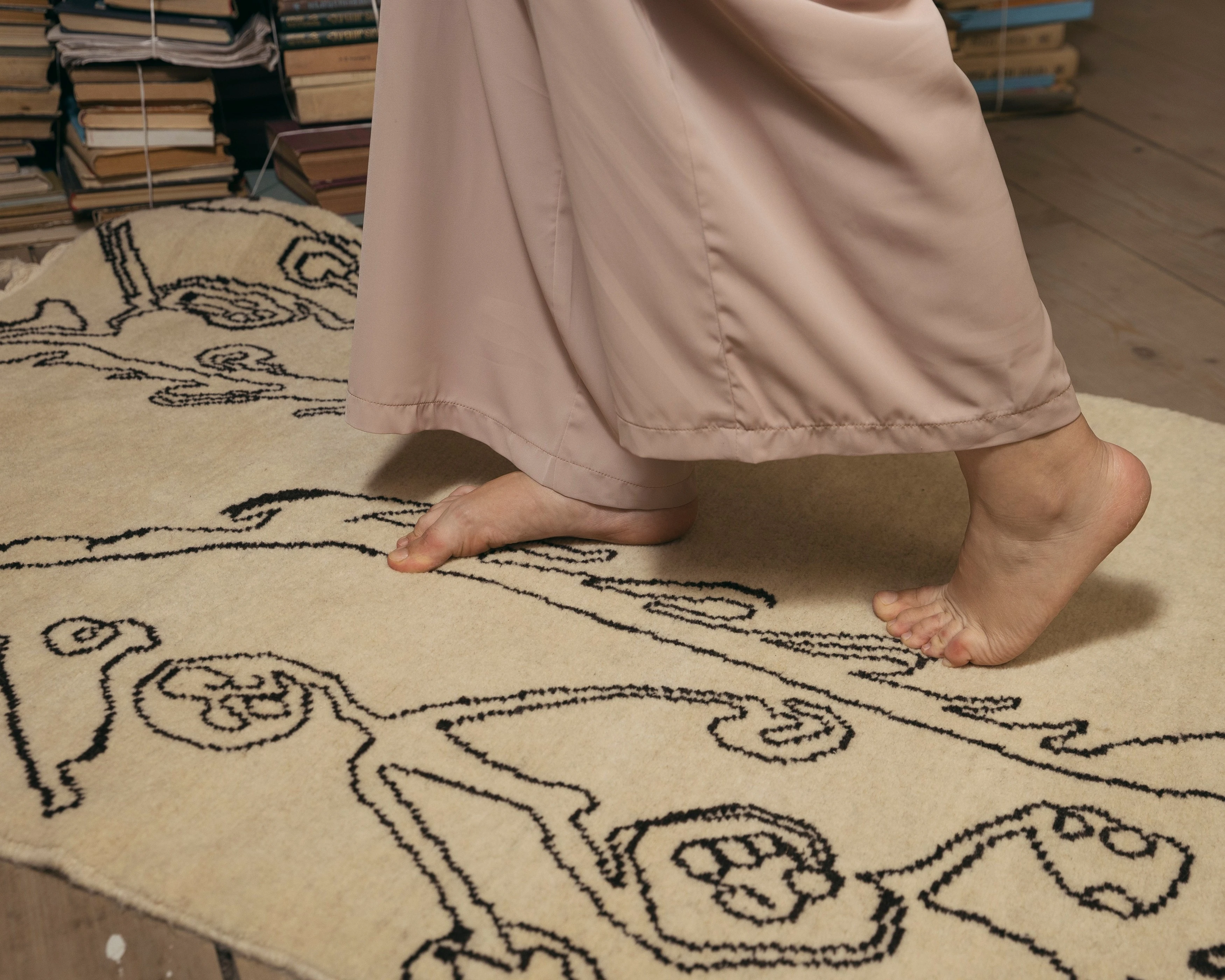
"Weaving really helps me to relax. When I’m upset, I weave and my negative emotions pass. It’s not possible to weave while you’re angry or upset. The rug heals you as you weave – it makes me feel good. Even after I’ve worked on a rug for a whole day, I can’t wait to get back to it and continue weaving. Nothing can bother me or make me upset when I’m weaving. In the future I hope that my creations become available everywhere, that I have clients from all over the world. I want to study rugs and felt art more to become an even better artist, and build a life for me and my family through these crafts."
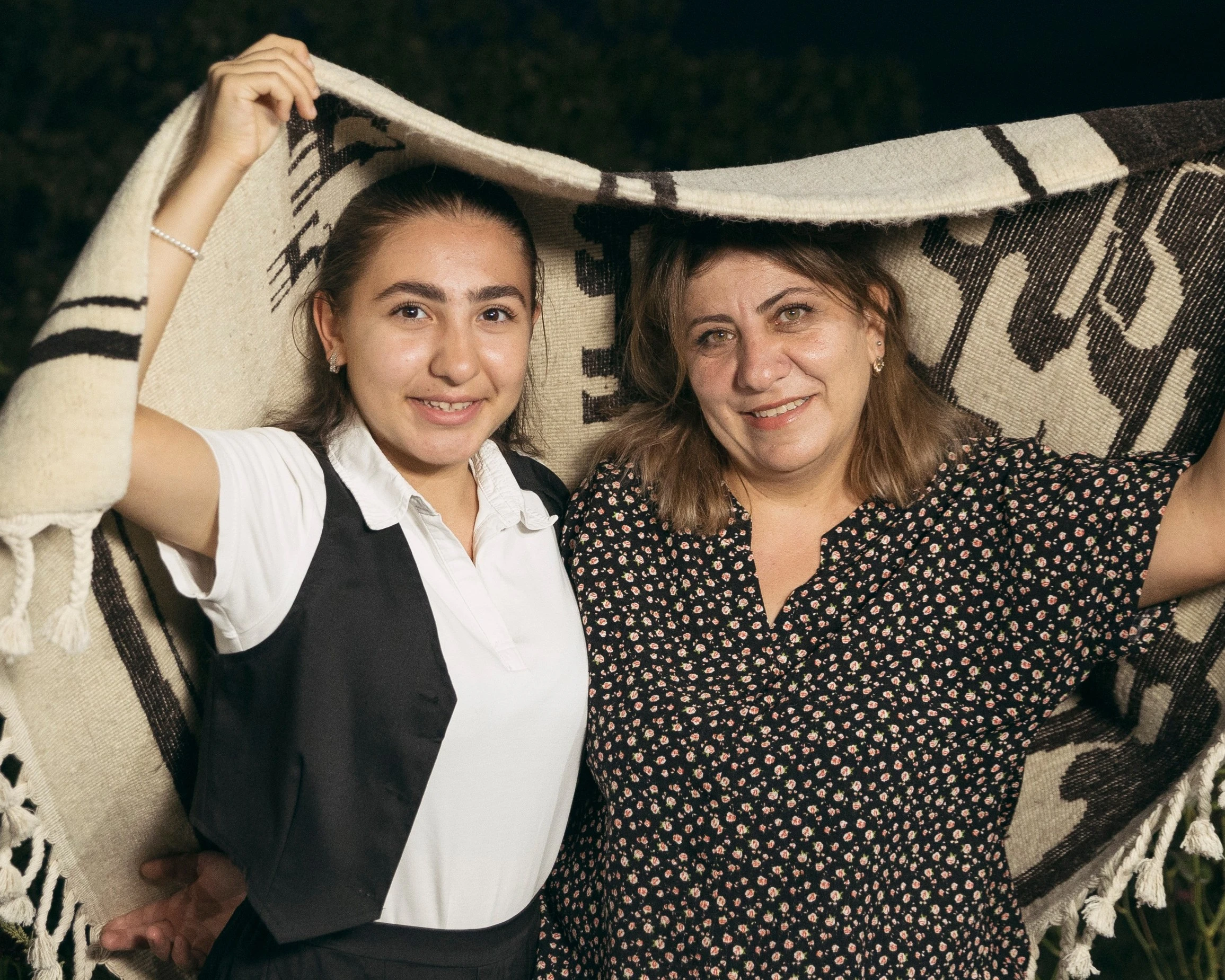
Serine Hovsepyan
Noyemberyan, Tavush Province
"I was born in Tumanyan, Lori Province. I came to Noyemberyan as a young bride. Before starting a family here, I studied art and design at the Vanadzor State College and was teaching painting, crochet, and embroidery at a local club in Tumanyan. I actually learned rug making from my daughter Ani. We learned that the House of Culture was offering free rug making classes, and Ani really liked Mrs. Rima’s work and wanted to learn. Her father and I agreed, and very soon we all realized that she’s very good at rug making. That was two years ago. Before Ani began learning rug making with Mrs. Rima I was teaching her embroidery at home. I’ve always loved rugs but I never had the opportunity to learn how to make one. When I saw that my daughter was a skilled weaver I asked her to teach me, and Ani was a great teacher. She taught me how to weave in a very easy and accessible way."
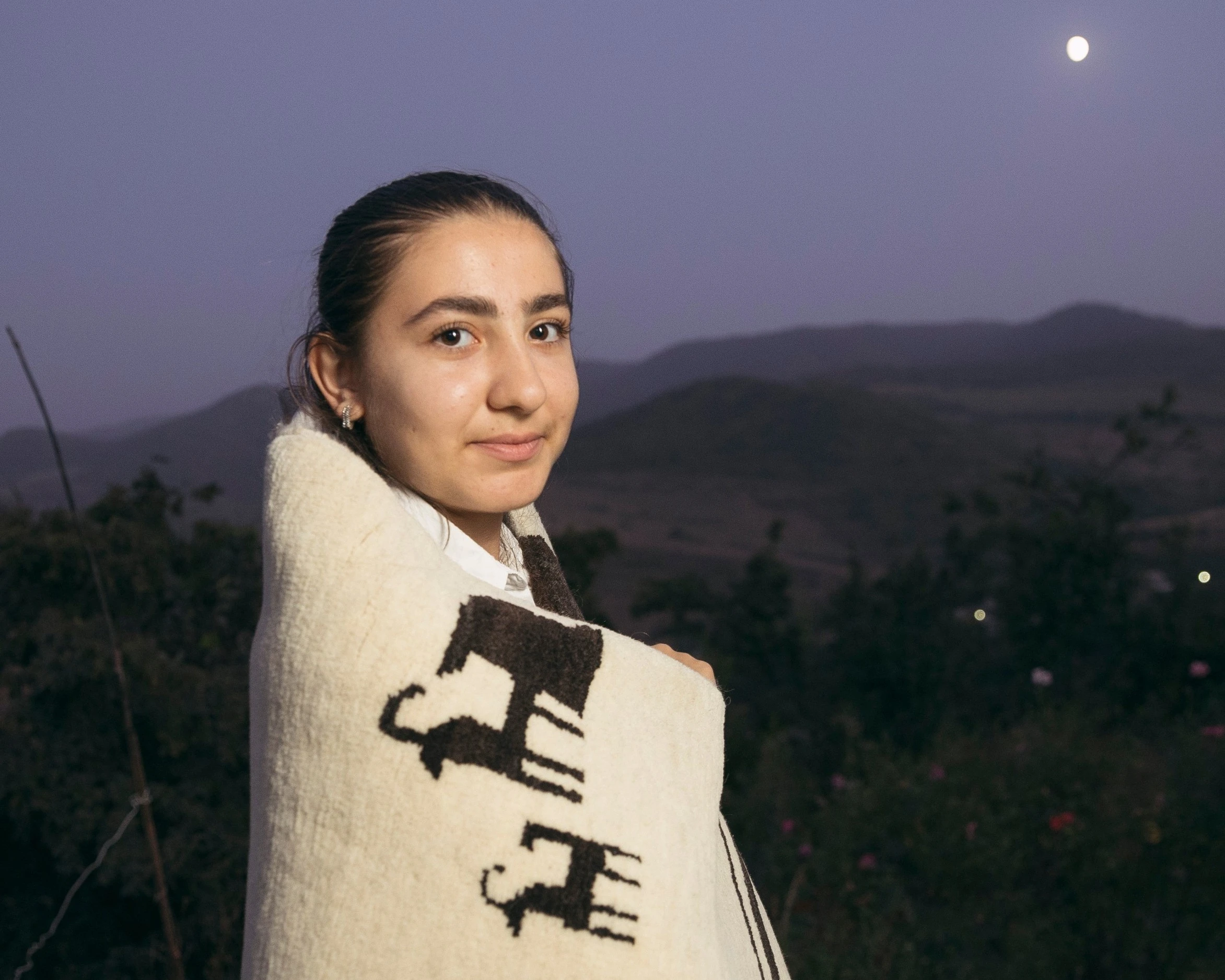
Ani: "I really liked the colors and the ornaments of traditional Armenian rugs. They called me, so to speak, and I wanted to learn how to make a rug of my own. In the beginning it was difficult, but the more I practiced with Mrs. Rima the better I became at it. Once my hands got used to weaving I started creating my own designs. Now I love it, and I offered to teach my mom how to weave, to which she agreed. I often think about how people were weaving just like us hundreds and hundreds of years ago."
Serine: "Hundreds of years ago weavers weren’t listening to really loud pop music while they worked. She blasts music while she weaves, it’s too loud, in my opinion. I prefer to work in silence. But we did work collectively to achieve this beautiful piece from the Barana Collection. My daughter, Diana, and Mrs. Rima helped me throughout the process. I kept in touch with them online and they even came over to our home to assist when we needed it."
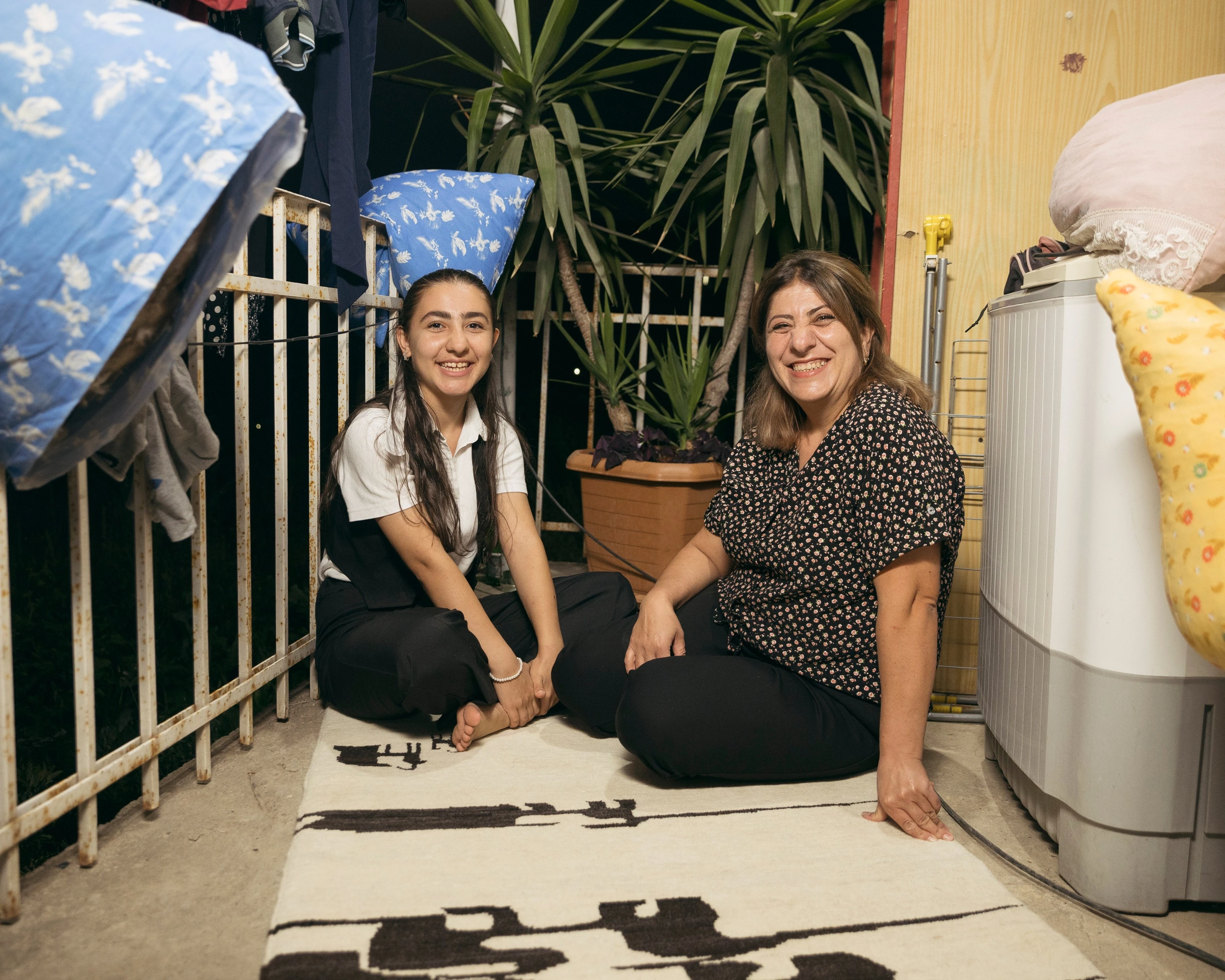
Ani: "Before cutting a rug from the loom, I talk to it, I compliment it, I tell it how beautiful it is, I ask how the weaving process was for it. I also share what my experience was like weaving it. The rug always responds positively. For example, if I say to the rug that at first I couldn’t imagine how it would turn out, whether it would be beautiful or not, the rug responds and tells me to always think positively, to keep working till the end."
Serine: "Ani still doesn’t know if she wants to pursue a career as a professional weaver in the future. For the time being she wants to study dance.
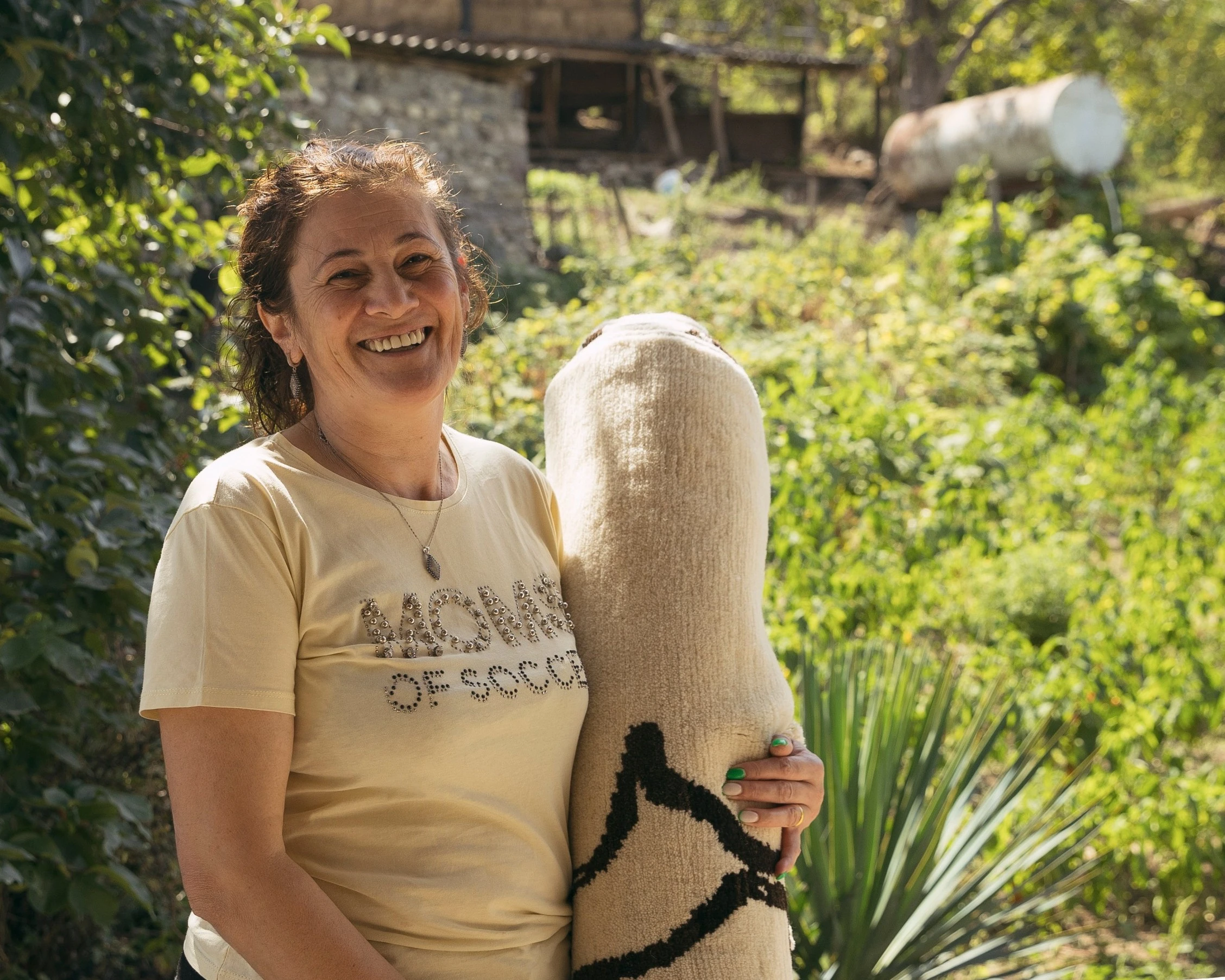
Naira Harutyunyan
Voskepar village, Tavush Province
"I was born in Noyemberyan and came to Voskepar village as a bride. I actually learned how to make rugs later in life, starting in 2019 when the House of Culture in Noyemberyan began offering classes to the public. There used to be a rug making club in Voskepar that lasted for only about a year – we were unable to find customers for the rugs we were making, and getting a hold of thread was difficult due to financial constraints. So I decided to continue improving my weaving skills in Noyemberyan, and that’s when I really began loving it. I’m not really sure why I decided to go deeper into weaving. I can’t say that there was something specific that motivated me to learn, but I’m really glad I did because I love it."
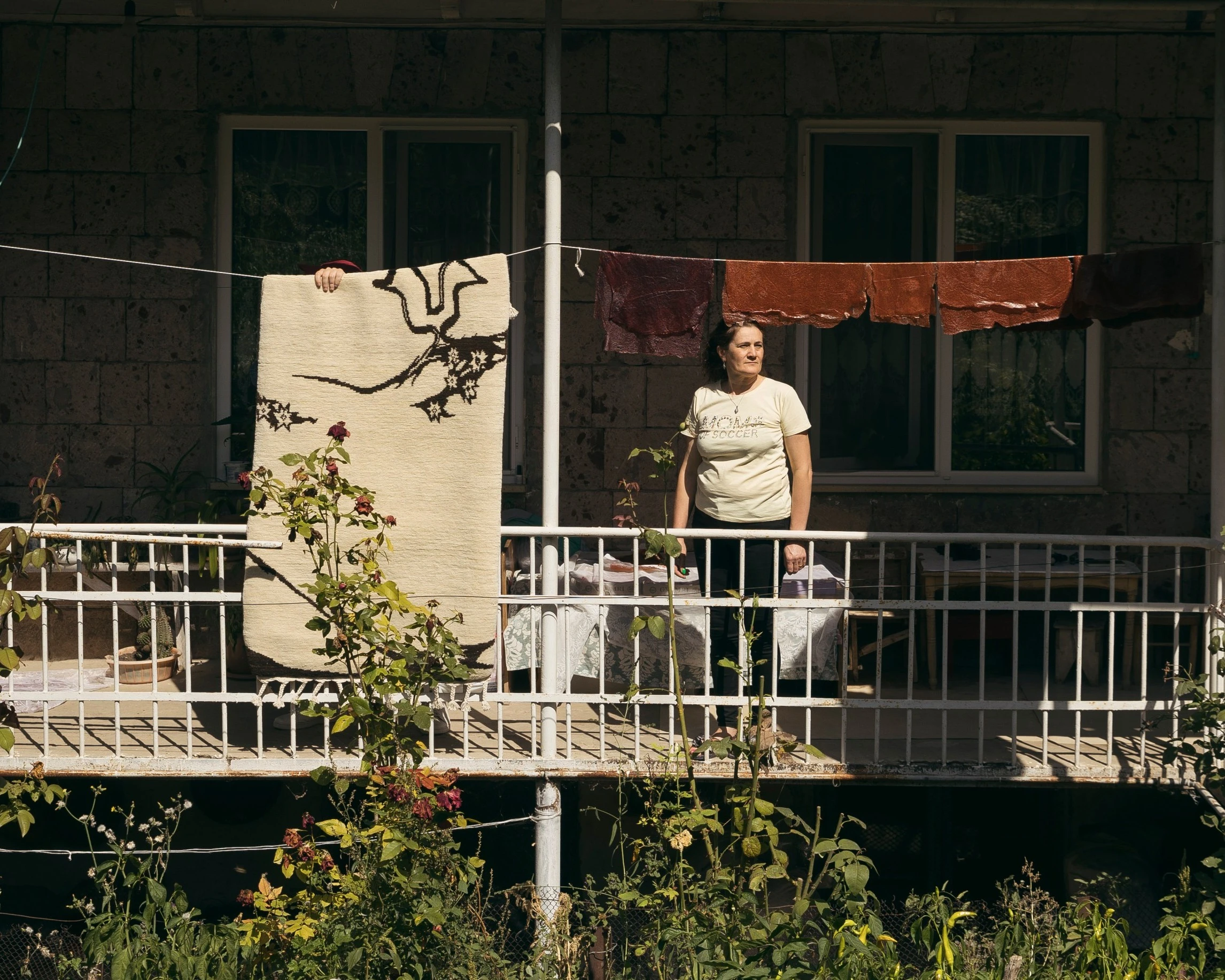
"Prior to 2019 I had never seen how a rug was made up close. My mother and grandmother used to make rugs before I was born. Our family home was full of their handmade creations, but otherwise I don’t have specific memories related to rugs from my childhood. I studied to be a seamstress when I was younger but never formally worked. Today other than rug making I work around the home and help keep our animals in the village. I’ve raised three boys. My youngest is currently serving in the army. I’m sure the other members of our collective would agree that weaving is a very relaxing process. After I complete my work around the home I sit down and weave at the end of each day. I really look forward to weaving. It’s as if the rug calls me every day to continue working on it."
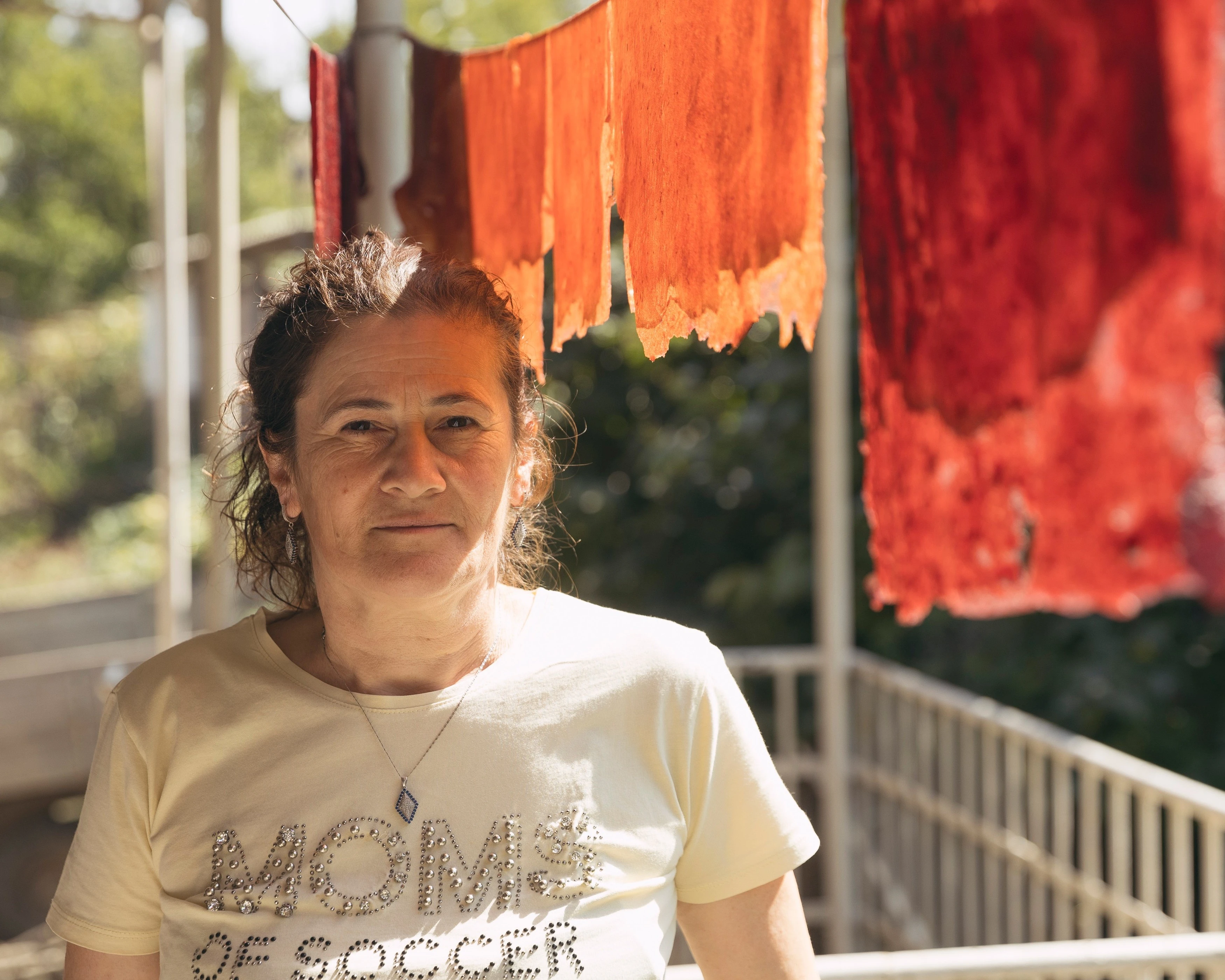
"None of our neighbors in the village continued weaving after our local club closed its doors. Of course before lots of people in the village were making rugs at home. After the collapse of the Soviet Union, many foreign rug traders came to Armenia, including our village, to buy rugs from local people and then resell them abroad. They often took advantage of local people who did not understand the true value of their family rugs. Even if they did know the true value of their rugs, they were so desperate for basic necessities like food and warm clothing in the 1990s that they sold them for pennies."
